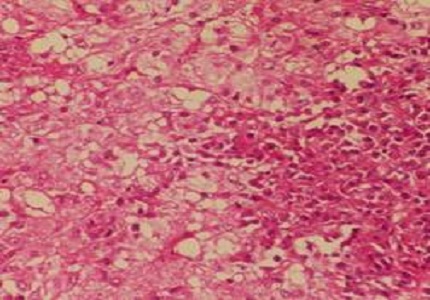Seemingly neoplastic destructive lesion of maxillary sinus, eroding the bone and extending into skull base- Atypical Rhinoscleromaor Antroscleroma
Abstract
Rhinoscleroma (RS) is a chronic granulomatous infectious disease predominantly affecting the nose and upper respiratory tract caused by Klebsiella rhinoscleromatis (KR), a gram negative diplobacillus. In India, it is prevalent in Northern and central parts. Belinov, in 1932 proposed the term “scleromarespiratorium” as the disease process may involve not only the upper, but also lower respiratory pathways. A 35 year old male from South India, presented with mass in the right maxillary and ethmoid sinuses eroding the bone, extending into infratemporal fossa and skull base, clinically mimicking malignancy. Histopathological examination confirmed rhinoscleroma. Nasal cavity free, isolated ipsilateral involvement of sinusesmakes this case interesting and one among the few case reports reported in the past. Rhinoscleroma should be differentiated from other granulomatous conditions and neoplastic diseases like lymphoma & Sinonasal carcinoma. Correct diagnosis is very crucial as sinus-positive cases are linked with antibiotic resistance and early recurrence after medical treatment.
Downloads
References
2. Ciro Maguina, Juan Cortez-Escalante, Fernando Osores-Plenge, Jorge Centeno, Humberto Guerra, Manuel Montoya, et al. Rhinoscleroma: Eight Peruvian cases. Rev. Inst. Med. trop. S. Paulo 2006; 48 (5):295-299.
3. Sunil Pai, Vinay S Bhat, Adersh S. Rhinoscleroma-A clinical study and review of literature. International Journal of Health Sciences and Research2015; 5(1):59-67.
4. John Segura-Vilchez, Paulina Gonzalez-Rojas, Lissette retana-Moreira. Rhinoscleroma. Acta med costarric 2013;55 (1):53-55.
5. Vaishali Sangole, Rachana Tiwari. Rhinoscleroma: Pros and Cons in diagnosis and prognosis. IOSR Journal of Dental and Medical Sciences2012;1(5):08-11.
6. Ezzat F Saad. Antroscleroma. J Laryngol Otol. 1988 Apr;102(4):362-4.
7. A.M. Gamea, F.A.Y. El-Tatawi. Ethmoid scleroma: Endoscopic diagnosis and treatment. J Laryngol Otol. 1992 Sep;106(9):807-9. [PubMed]
8. Ahmed Atef, Nassim Talaat, Ahmed El Farouk, Mohamed Qotb. Sinus involvement in cases of rhinoscleroma: a cause of antibiotic resistance and early recurrence after medical treatment. The Egyptian Journal of Otolaryngology2012;28(1):8-11.
9. Ahmed Abdel KhalekAbdelRazek, Ahmed AhmedElasfour. MR appearance of rhinoscleroma. AJNR Am J Neuroradiol. 1999 Apr;20(4):575-8.
10. Ahmed RH Ahmed, Zeinab H El-badawy, Ibrahim R Mohamed, Waleed AM Abdelhameed. Rhinoscleroma: a detailed histopathological diagnostic insight. Int J Clin Exp Pathol 2015;8(7):8438-8445.



 OAI - Open Archives Initiative
OAI - Open Archives Initiative


